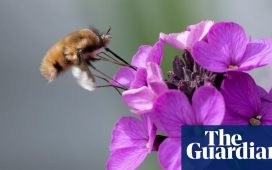
Veterinarian Gerhardus Scheepers (supported by Steve Dell of Pilanesberg Wildlife Trust) saws off a horn.
It’s common knowledge that our country’s rhinos face a dire threat due to poaching. Thousands of these endangered animals have already been killed in our game reserves so that the horns can be sold at astronomical prices in the East.
While dehorning alone is not enough to stop the slaughter, it is an important weapon in the war on poaching, along with more traditional anti-poaching methods, such as security patrols, careful monitoring of rhino populations and especially public awareness campaigns.
But dehorning a rhino is an expensive process. And since the horn (which consists only of calcium, melanin and keratin) grows back at a rate of 12 cm a year, it should be done every 14 to 16 months. SANParks estimates the cost at up to R8 000 per animal, and in most cases rely on the financial assistance of non-governmental organisations and business partnerships.
That’s exactly why Toyota recently invited go! to take part in a large-scale dehorning campaign in the Pilanesberg Game Reserve. The project was funded by the Pilanesberg Wildlife Trust and the Zululand Conservation Trust, with the support of Toyota.
So far, Toyota has donated 12 vehicles to the Pilanesberg Game Reserve to combat rhino poaching, and also sponsors the service and maintenance of the vehicles.
John Thomson, vice president of Future Toyota at Toyota South Africa, is involved at ground level in rhino conservation and the anti-poaching projects. John, a passionate photographer, began his journey with rhinos years ago.
He was processing pictures of the animals on his computer while his granddaughter was sitting on his lap. The thought occurred to him that her children or grandchildren might never have the privilege of seeing a rhino in the wild. “We are here now. We now have to ensure that they continue to exist in 10 or 20 years,” says John.
John says rhino poaching has decreased significantly since dehorning was applied. Although it still takes place, the potential gain from a small piece of horn, weighed against the danger of poaching, makes it much less attractive to criminals.
Rhino horn has a keratin base, like our nails, and the animal does not experience pain when it is cut off. It is still traumatic for the animals as they have to be stunned by a shot from a helicopter. The team of volunteers, pilots, veterinarians and game wardens need to work together closely to complete the process as quickly as possible.
The group will be in the field daily for about 10 days between sunrise and sunset.
At daybreak there is already activity in the house where the team stays for the duration of the dehorning project. Food parcels are prepared, medicines are unpacked and prepared, and fuel for the helicopters is loaded into support vehicles.
Dolf Van der Merwe is an experienced helicopter pilot. Together with Gerhardus Scheepers, veterinarian of the Zodiac Animal Clinic in Brits in North West, he circles in the air above the reserve in search of rhinos. Gerhardus marks the targeted animal with one shot, and Dolf skilfully herds the animal in the direction of the team support vehicles. The rhino is watched until it falls asleep.
Now the team works fast. While Gerhardus saws off the horn and smooths the rough edges with an angle grinder, and John paints a disinfectant on the remaining horn to prevent infection.
Other team members administer a multi-vitamin injection, anti-inflammatory and deworming agents. The animal’s eyes are treated with cleansing eye drops, it is marked on the ear and DNA samples are collected so that each is recognisable in case of the illegal trade of the horn.
Everything happens quickly, and before you know it, an injection is administered to wake up the rhino. Within minutes, the animal is back on its feet. In the case of white rhinos, the animal slowly wanders away while we watch.
But in the case of the black rhinos, we are warned to be in our vehicles before the injection is administered – these guys get angry, and will storm anything in their path in a blind rage when they wake up.
Rhino calves are preferably not anesthetised, and are encouraged by team members to stay in the vicinity of the sleeping mother. In some cases, however, the mother and calf are separated from each other in the chaos, and then the calf must be anesthetised.
The sleeping little rhino is wrapped in a sheet and unloaded by helicopter close by his mother. The team works with great care and urgency to reunite mom and baby as quickly as possible.
It’s tough but satisfying work. According to John, the message should be spread as far and wide as possible that rhinos are on the verge of extinction.
And just as important is the message that the horns have no medicinal value. If anyone wants to help, it is a good idea to make donations directly to institutions such as the Pilanesberg Wildlife Trust and the Zululand Conservation Trust as it will be used directly for rhino conservation.
Visit pilanesbergwildlifetrust.co.za and zululandconservationtrust.org for more information on the work they do.




















